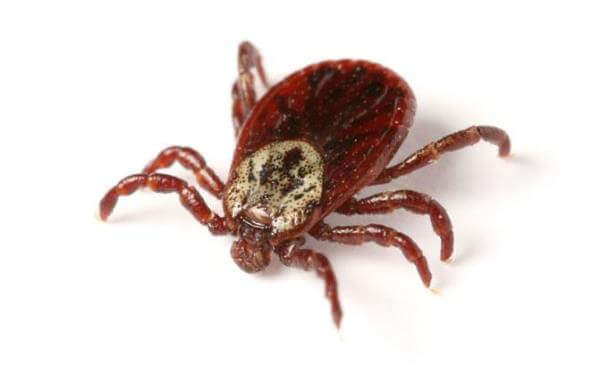
With warmer weather comes “tick season” and the annual observance of National Lyme Disease Awareness Month throughout the month of May.
The Illinois Department of Public Health (IDPH) is urging the public to learn how to protect themselves from ticks and Lyme disease.
“Lyme disease is a serious bacterial infection transmitted through the bite of infected ticks,” said IDPH Director Dr. Sameer Vohra. “Lyme Disease is the most common vector-borne illness in the United States affecting more than 500,000 people nationally each year. As the summer approaches, I encourage our residents to learn to ‘Fight the Bite’ and protect yourself and your loved ones from tickborne illnesses. If you have been in wooded or high grassy areas and are experiencing symptoms – fever, fatigue, headache and a circular rash – see your health care provider immediately.”
IDPH has created Pocket Cards, a Tick Defense Knowledge Check crossword puzzle and other materials for school aged children that make it fun for everyone in the family to learn how to protect yourself and your loved ones from tickborne illnesses.
Director Vohra said the most important thing people can do to “Fight the Bite” is to diligently check themselves, their pets and children for ticks after spending time in areas where ticks live, such as in and near wooded areas, tall grass and brush. Removing ticks within a 24-hour period reduces the risk of potential disease transmission.
In addition to Lyme disease, other serious tickborne diseases include Rocky Mountain Spotted Fever, Tularemia, Ehrlichiosis, and Babesiosis. Some tickborne illnesses can be life threatening. Rocky Mountain Spotted Fever is particularly dangerous and may cause death as quickly as five days after symptom onset.
If you become ill with fever and/or rash after being in an area prone to ticks, contact your healthcare provider immediately.
IDPH has created an interactive Tick Surveillance Map that documents the counties in Illinois where the different tick species have been confirmed as well as the diseases they may carry.
Public health officials note that Illinoisans who are travelling out of state should be aware that there is a much higher prevalence of Lyme disease in certain geographic areas, including Wisconsin, Minnesota and parts of Michigan, and across the northeastern United States.
Following are additional tips for how to avoid tickborne illnesses and have a healthy time in the outdoors:
Walk in the center of trails. Avoid wooded, bushy areas with high grass and leaf litter. Our Camper Checklist provides more details on how to protect yourself.
Wear light-colored clothing to make ticks easier to find. Tuck long pants into socks and boots.
Apply an EPA-registered insect repellent containing 20% DEET, picaridin, IR3535, or Oil of Lemon Eucalyptus according to label directions. The EPA has a search tool that can help you find the product that best suits your needs.
Conduct full-body tick checks on family members (underarms, ears, belly button, behind knees, between legs, waist, hair and scalp) every two to three hours. Also check any gear or pets taken on outings.
To kill ticks after being outdoors, put clothes in the dryer on high for 10 minutes (or one hour for damp clothes).
Bathe or shower within two hours after coming indoors.
If you find a blacklegged tick on you that may have been attached for more than three days, then seek medical attention to decide if you need an antibiotic to prevent Lyme disease.
It is often helpful to keep the tick for species identification. Place the tick in rubbing alcohol or in a sealed bag/container to bring to your healthcare provider or local health department for submission to IDPH. A submission form can be found HERE on the IDPH website.


 Sumner boil order ends,trash pickup delayed
Sumner boil order ends,trash pickup delayed
 IDNR revises waterfowl zone
IDNR revises waterfowl zone
 Two Lawrence County men charged
Two Lawrence County men charged
 2026 Miss Illinois County Fair Pageant coming in January
2026 Miss Illinois County Fair Pageant coming in January
 Unit #20 Board hears about heat and new athletic facility proposal
Unit #20 Board hears about heat and new athletic facility proposal
 Indiana's state parks offer New Years Day events
Indiana's state parks offer New Years Day events
 Parkview hosts annual school spelling bee
Parkview hosts annual school spelling bee
 GSH receives accreditation
GSH receives accreditation
 Crawford County man charged with sex crimes
Crawford County man charged with sex crimes
 Voter registration underway in Lawrence County
Voter registration underway in Lawrence County
 DNR receives regional award for project on former mine land near Pleasantville
DNR receives regional award for project on former mine land near Pleasantville
 Unit #10 Board hosts project open house
Unit #10 Board hosts project open house
 County to assist in Sumner street improvements
County to assist in Sumner street improvements
 BMV announces Christmas and New Year's Day holiday hours
BMV announces Christmas and New Year's Day holiday hours
 Bridgeport boil order lifted
Bridgeport boil order lifted
 Gregg Park project to move forward
Gregg Park project to move forward
 St. Francisville hires water engineer
St. Francisville hires water engineer




